more>>More News
- National Day
- ways to integrate into Chinese style life
- Should they be in the same university with me?!!
- Chinese Ping Pang Legend: the Sun Will Never Set
- A Glance of those Funny University Associations
- mahjong----The game of a brand new sexy
- Magpie Festival
- Park Shares Zongzi for Dragon Boat Festival
- Yue Fei —— Great Hero
- Mei Lanfang——Master of Peking Opera
Top 10 Rivers in China
By admin on 2015-01-26
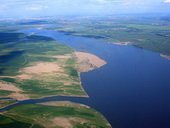 With more than 50,000 rivers, China
abounds in rivers. Almost all large rivers in China belong to the exterior river
system, which directly or indirectly emptying into the seas. Because China's
terrain is high in the west and low in the east, most of its rivers flow east
and empty into the Pacific Ocean, including the Yangtze, Yellow, Heilong, Pearl,
Liaohe and Haihe rivers. The following are the top 10 most important rivers in
China.
With more than 50,000 rivers, China
abounds in rivers. Almost all large rivers in China belong to the exterior river
system, which directly or indirectly emptying into the seas. Because China's
terrain is high in the west and low in the east, most of its rivers flow east
and empty into the Pacific Ocean, including the Yangtze, Yellow, Heilong, Pearl,
Liaohe and Haihe rivers. The following are the top 10 most important rivers in
China.
1. Yangtze River (Changjiang, 长江)
The Yangtze
River is the longest river in China, the third longest in the world. It
originates from the snow-capped Geladandong—the main peak of Tanggula Mountains
of the Qinghai and Tibet plateau, flows through Qinghai, Tibet, Yunnan, Sichuan,
Hubei, Hunan, Jiangxi, Anhui and Jiangsu, and finally enters into the East China
Sea in Shanghai. The 6300-kilometer-long Yangtze River has eight major
tributaries and a catchment area of 1.8 million square kilometers, which
equivalent to 1/5 of the total land of China.
Yangtze River Curise has become a must-do activity when visitors visit China. The Yangtze River winds its way through high mountains and deep valleys with many tributaries. The cruise always includes a variety of exciting shore excursions to local riverside villages and historic sites. The highlights of the Yangtze River are the magnificent Three Gorges and the famous Three Gorges Dam.

2. Yellow River (Huanghe, 黄河)
The Yellow River,
with a total length of 5,464 kilometers, is the second longest river in China.
The Yellow River is the birthplace of ancient Chinese culture and the cradle of
Chinese Civilization. It is originated from the Bayanhar Mountain Range in
Qinghai Province, meandering across 9 provinces and finally emptying into the
Bohai Sea at Kenli of Shandong Province.
The unique scenery of the Loess Plateau is extremely attractive. Along the Yellow River, tourists can not only fully enjoy the breathtaking natural scenery of the Yellow River, but also explore the Chinese history and culture. The multiplying and growing sites of Chinese ancients can be found along the Yellow River, showing the rise and decline of China's history.
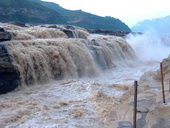
3. Heilongjiang River (Heilongjiang, 黑龙江) 4.Songhuajiang River (Songhuajiang, 松花江) 5. Zhujiang River (the Pearl River, 珠江) 6. Brahmaputra River (Yaluzangbujiang, 雅鲁藏布江) The Zhujiang (the Pearl River) is the third longest
river in China (2,200 km, after the Yangtze River and the Yellow River), and
second largest by volume (after the Yangtze). It is the largest river in south
China, flowing into the South China Sea between Hong Kong and Macau. Its lower
reach forms the Pearl River Delta. The Pearl River is formed by convergence of
three rivers---the Xijiang, Beijiang and Dongjaing. The river flows through the
majority of Guangdong, Guangxi, Yunnan, and Guizhou Provinces, and parts of
Hunan and Jiangxi, forming the 409,480 km2 Pearl River Basin, which has a
network of rivers, fertile soil, abundant natural resources and a sense
population. 7. Lancang River(Lancang Jiang, 澜沧江) 8. Nujiang River (Nujiang, 怒江) 9. Hanjiang River (Han Jiang, 汉江) 10. Liaohe River (Liao He, 辽河)
The
Heilongjiang River (also called Amur), the Sino-Russian boundary river, runs
eastwardly across the northern part of north China and finally empties into the
Sea of Okhotsk. Its entire length is 4,370 kilometers, the 11th largest river in
the world. Wherever the Heilongjiang River flows across, the forests are
luxuriant and the aquatic grasses are verdant. The river is in the shape of a
black dragon and the name of the Heilongjiang River was thus formed.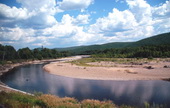
The
Songhuajiang River (also known as the Sungari River in English) is a river in
Northeast China, and it is the largest tributary of the Heilongjiang River,
flowing about 1,927 km from Changbai Mountains through the Heilongjiang and
Jilin provinces. In winter, the beautiful rime along the banks of the
Songhuajiang River is the unique feature of the river. Experiencing the white
fairytale land in winter is amazing.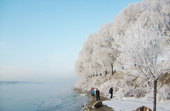
The
Zhujiang (the Pearl River) is the third longest river in China (2,200 km, after
the Yangtze River and the Yellow River), and second largest by volume (after the
Yangtze). It is the largest river in south China, flowing into the South China
Sea between Hong Kong and Macau. Its lower reach forms the Pearl River Delta.
The Pearl River is formed by convergence of three rivers---the Xijiang, Beijiang
and Dongjaing. The river flows through the majority of Guangdong, Guangxi,
Yunnan, and Guizhou Provinces, and parts of Hunan and Jiangxi, forming the
409,480 km2 Pearl River Basin, which has a network of rivers, fertile soil,
abundant natural resources and a sense population.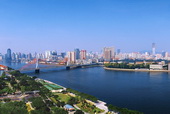
The
Brahmaputra is a trans-boundary river and one of the major rivers of Asia. From
its headsprings in the Tibet Autonomous Region of China, the Brahmaputra River
flows first east and then south into the Indian Ocean. About 1,800 miles (2,900
km) long, the Brahmaputra boasts the Brahmaputra Grand Canyon, the largest
canyon in the world, 504.6 km long and 6,009 m deep. The river is an important
source for irrigation and transportation.
The Lancang
River, also known as the Mekong River, is the longest river in the Southeast
Asia, with a total length of 2,354 kilometers. It takes its source from the
Tanggula Mountain Range in Qinghai Province, China. The Lancang River runs south
until it leaves China at the Nanla Bayout of Yunnan Province and there from
changes its name from the Lancang River to the Mekong River. The river finally
empties into the Pacific Ocean in the south of Vietnam. The Lancang River is
China's main artery of water carriage connecting Southeast Asian countries, and
it is reputed as the "Danube of the East". The Lancang River is a fantastic
river with more than ten ethnic minorities living along the river. The ethical
cultures and customs are special and the scenic spots and historical sites are
numerous.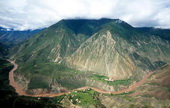
The Nujiang River
is originated from the southern slope of the Tanggula Mountain Range in Tibet
Autonomous Region, flowing north to south across the Tibet Autonomous Region and
Yunnan Province, with a total length of 2,816 kilometers and a drainage area of
324,000 square kilometers. The name of the river is changed into the Salween
River after flowing into Burma from China, and it finally empties into the
Andaman Sea of Indian Ocean at the Moulmein.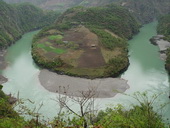
The Hanjiang
River, also called Han Shui River, is one of the most important tributaries of
the Yangtze River with a total length of 1532 km. It rises in southwestern
Shaanxi and then crosses into Hubei. It merges with the Yangtze at Wuhan in
Hubei Province. The name of the Han kingdom and the later Han Dynasty and
subsequently of the China's majority ethnic group apparently derives from this
river.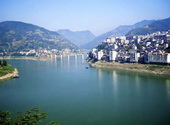
Being one of the
largest rivers in northern China, the Liaohe River is called the Mother River by
people in Liaoning Province. Originated in Qilaotu Mountain in Heibei Province,
it flows 1,394 kilometers through Hebei, Inner Mongolia, Jilin, and Liaoning
provinces, and at last empties into the Bohai Sea, with a drainage area of
201,600 square kilometers.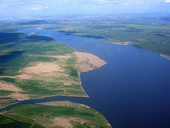
- Contact Us
-
Tel:
0086-571-88165708
0086-571-88165512E-mail:
admission@cuecc.com
- About Us
- Who We Are What we do Why CUECC How to Apply
- Address
- Study in China TESOL in China
Hangzhou Jiaoyu Science and Technology Co.LTD.
Copyright 2003-2024, All rights reserved




 Chinese
Chinese
 English
English
 Korean
Korean
 Japanese
Japanese
 French
French
 Russian
Russian
 Vietnamese
Vietnamese
